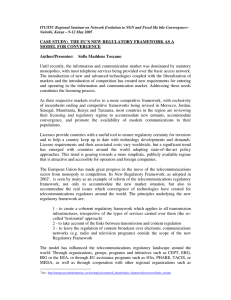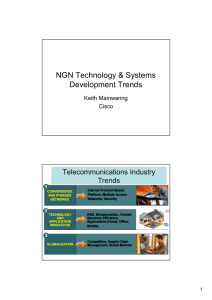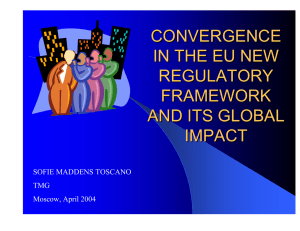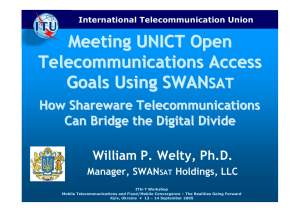ITU/ITC Regional Seminar on Network Evolution to NGN and Fixed... for CEE, CIS and Baltic States - Moscow, Russia (27-30...
advertisement
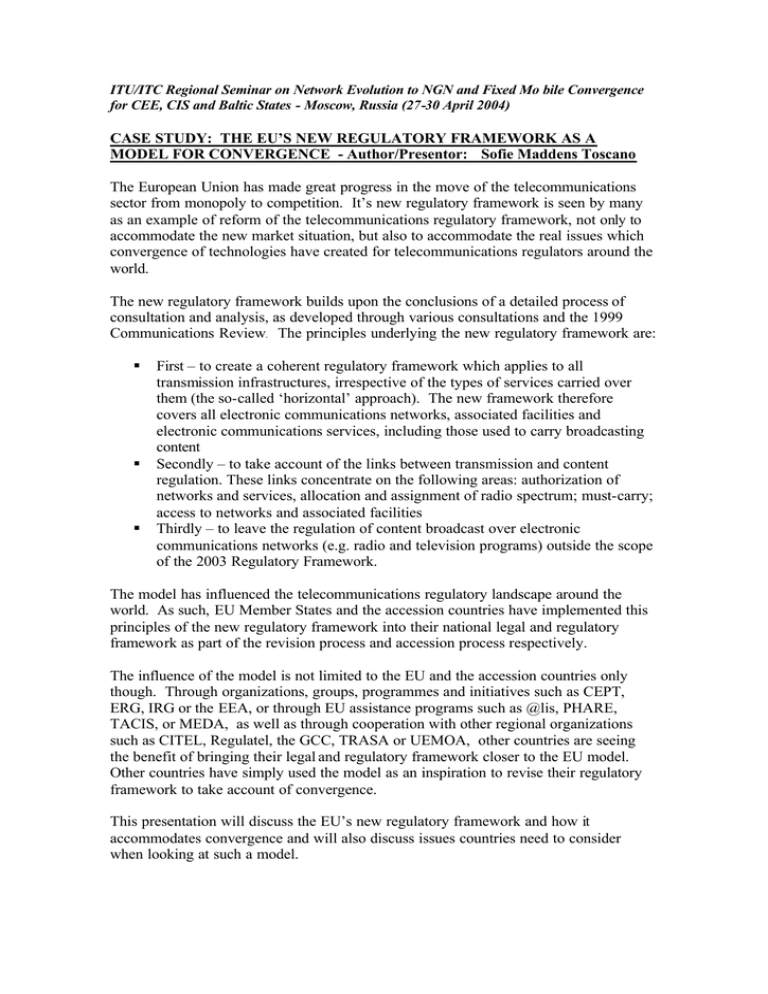
ITU/ITC Regional Seminar on Network Evolution to NGN and Fixed Mo bile Convergence for CEE, CIS and Baltic States - Moscow, Russia (27-30 April 2004) CASE STUDY: THE EU’S NEW REGULATORY FRAMEWORK AS A MODEL FOR CONVERGENCE - Author/Presentor: Sofie Maddens Toscano The European Union has made great progress in the move of the telecommunications sector from monopoly to competition. It’s new regulatory framework is seen by many as an example of reform of the telecommunications regulatory framework, not only to accommodate the new market situation, but also to accommodate the real issues which convergence of technologies have created for telecommunications regulators around the world. The new regulatory framework builds upon the conclusions of a detailed process of consultation and analysis, as developed through various consultations and the 1999 Communications Review. The principles underlying the new regulatory framework are: § § § First – to create a coherent regulatory framework which applies to all transmission infrastructures, irrespective of the types of services carried over them (the so-called ‘horizontal’ approach). The new framework therefore covers all electronic communications networks, associated facilities and electronic communications services, including those used to carry broadcasting content Secondly – to take account of the links between transmission and content regulation. These links concentrate on the following areas: authorization of networks and services, allocation and assignment of radio spectrum; must-carry; access to networks and associated facilities Thirdly – to leave the regulation of content broadcast over electronic communications networks (e.g. radio and television programs) outside the scope of the 2003 Regulatory Framework. The model has influenced the telecommunications regulatory landscape around the world. As such, EU Member States and the accession countries have implemented this principles of the new regulatory framework into their national legal and regulatory framework as part of the revision process and accession process respectively. The influence of the model is not limited to the EU and the accession countries only though. Through organizations, groups, programmes and initiatives such as CEPT, ERG, IRG or the EEA, or through EU assistance programs such as @lis, PHARE, TACIS, or MEDA, as well as through cooperation with other regional organizations such as CITEL, Regulatel, the GCC, TRASA or UEMOA, other countries are seeing the benefit of bringing their legal and regulatory framework closer to the EU model. Other countries have simply used the model as an inspiration to revise their regulatory framework to take account of convergence. This presentation will discuss the EU’s new regulatory framework and how it accommodates convergence and will also discuss issues countries need to consider when looking at such a model.

